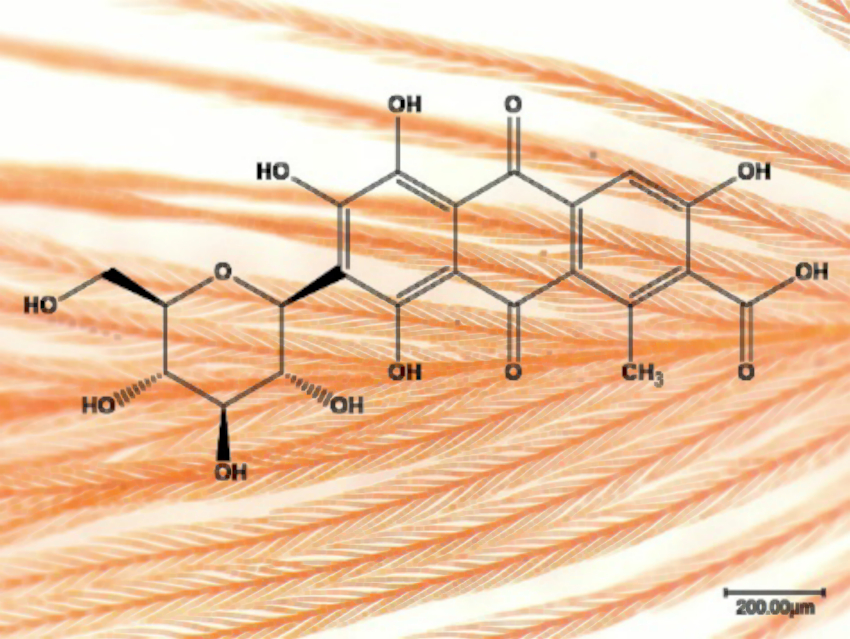Surface-enhanced Raman scattering (SERS) is a sensitive analytical technique in which Raman scattering of molecules is enhanced by adsorption on rough metal surfaces or plasmonic nanostructures. The method provides unique possibilities for the non-destructive analysis of organic molecules, including biopigments.
Using star-shaped silver colloids as the nanoplasmonic platform, Ioanna Kakoulli, University of California, Los Angeles, USA, and colleagues have identified a new biopigment based on carminic acid (pictured), the main coloring compound of cochineal (Dactylopius coccus) and other scale insects, in the red crown feathers of the Ruby-crowned Kinglet (Regulus calendula). Its identification was based on the detection of peaks characteristic of carminic acid.
The silver nanostars were prepared from silver nitrate via a two-step reduction process using hydroxylamine and sodium citrate. The feathers were divided into individual barbs, cast in resin, and cut into thin cross-sectional samples. Then the silver nanostars were deposited onto the samples and the spectra were collected.
Overall, the results revealed a potential new class of biopigments in bird feathers. The work has shown SERS to be a sensitive, non-destructive technique for the identification of biopigments such as carminic acid even in trace amounts and in mixtures with predominant colorants that are also strong Raman scatterers, such as carotenoids.
- Unique Red Dye from Scale Insects Discovered in Red Ruby-Crowned Kinglet Feathers by Surface-Enhanced Raman Scattering,
Xuanyi Wu, Santiago Sanchez-Cortes, Ioanna Kakoulli,
ChemPlusChem 2021.
https://doi.org/10.1002/cplu.202100178




